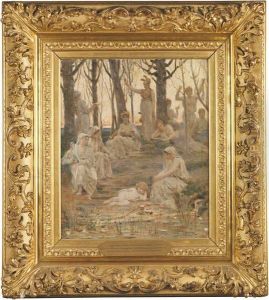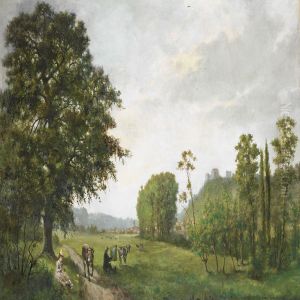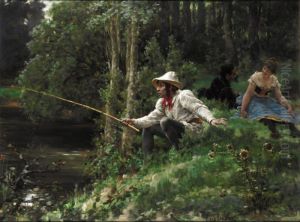Jules Garnier Paintings
Jules Garnier was a French geologist and mining engineer who is not primarily known for his contributions to the world of art, but rather for his scientific endeavors. Born on March 8, 1839, in Paris, France, he is widely recognized for discovering the mineral later named garnierite in his honor, which is a significant ore of nickel.
Garnier studied at the École des Mines in Paris, where he received a comprehensive education in geology and engineering. His career took him to New Caledonia, a French territory in the South Pacific, where he conducted extensive geological surveys. It was there, in 1864, where he made his famous discovery of garnierite, which played a pivotal role in the economic development of New Caledonia due to its nickel content.
Aside from his work in geology, Garnier also contributed to the understanding of New Caledonia's flora and fauna, and he documented his findings in several scientific publications. His dedication to his work and his contributions to the mining industry earned him recognition and respect among his peers.
Jules Garnier's legacy is primarily in the scientific community, and his work had a lasting impact on the mining industry and the economic growth of regions rich in nickel ore. He passed away on May 18, 1904, leaving behind a legacy as a pioneering geologist and mining engineer.




















